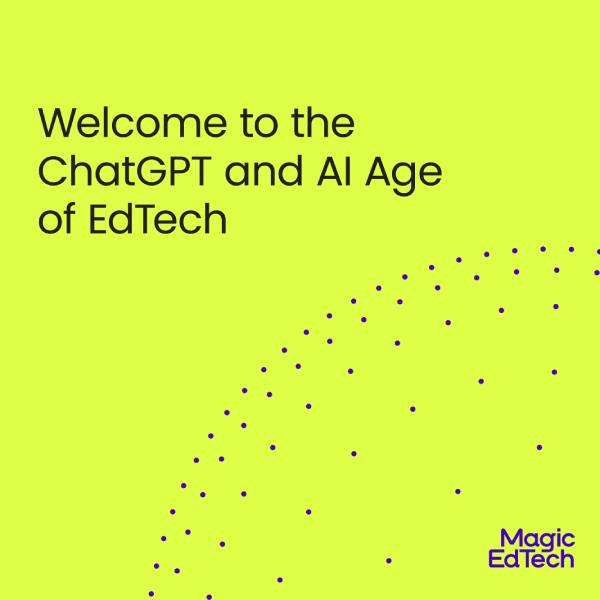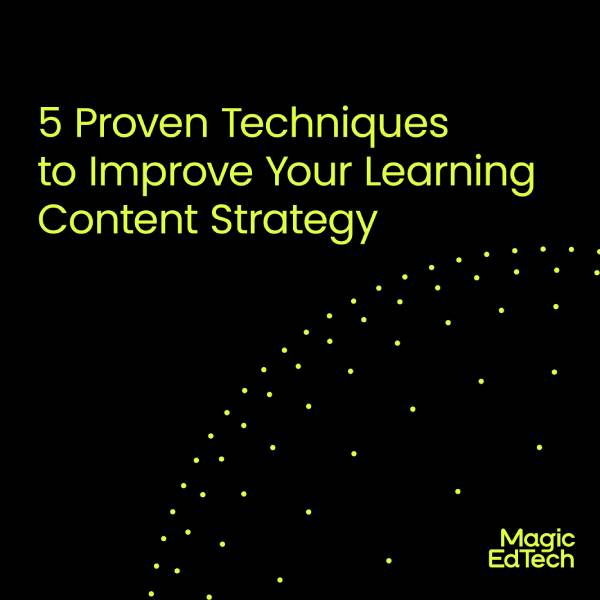9 Must-Have Features for Your eLearning Platform
- 4 July, 2023
- Reading Time: 5 mins
With digital learning becoming the new normal, the demand for online eLearning platforms has skyrocketed. So, how can you ensure that your EdTech tool stands out and becomes the go-to solution in the market?
CTOs, marketing heads, and product design specialists agree that having the right features in your product can make a difference. Therefore, despite plenty of eLearning tools and platforms to choose from, you might want to consider creating your platform that offers unique features and capabilities.
So, in this article, we will explore the must-have features that can revolutionize ed-tech tools and propel them to success.
Must-Have Features for an Exceptional EdTech Product
Are you ready to discover the USPs that can help your platform outshine the competition and become widely adopted? Here are the features that your platform must have:
1. Content Creation and Management
Creating and managing content is a crucial aspect of any EdTech tool. Educators need tools that help them easily create, edit, organize, and share content like lessons, courses, quizzes, assignments, and multimedia resources.
You must empower educators to provide engaging and interactive learning experiences for their students. Moreover, the content creation tools should be user-friendly and intuitive, so educators can quickly develop and update their materials without needing advanced technical skills.
For example, a teacher wants to create an interactive lesson on a specific topic. With a powerful content creation feature, they can:
- Design captivating multimedia presentations.
- Embed videos and images.
- Add interactive elements like quizzes or simulations.
2. Augmented Reality and Virtual Reality Content
You can completely transform students’ learning by incorporating augmented reality (AR), virtual reality (VR), simulations, and games into EdTech tools. These immersive AR & VR learning solutions provide interactive and lifelike experiences that make complex ideas easier to understand and more exciting. They also help bridge the gap between what students learn in theory and how it applies to the real world.
With access to flexible and adaptable tools, content creators can include game-changing multimedia elements like AR and VR for learning. Students can explore virtual environments, interact with objects, and even simulate various scenarios without a high-speed internet connection.
3. SIS and LMS Integrations
To create a smooth educational experience, EdTech tools should have strong integration capabilities with Student Information Systems (SIS) and Learning Management Systems (LMS). These integrations make it easy for educators to efficiently import and manage their courses, student data, and assignments.
By doing so, educators can devote more time to teaching and engaging with students instead of getting caught up in manual data entry and repetitive tasks.
With SIS and LMS integration, educators can easily access student information, track progress, and assign tasks without hassle. This saves time and ensures accurate and up-to-date data across different platforms.
4. Assessment and Feedback
Practical assessment and feedback mechanisms are crucial components of any EdTech tool. Customizable quizzes, tests, and assignments allow educators to evaluate students’ knowledge and understanding of the subject matter.
Furthermore, features like automated grading can significantly reduce the time spent on manual assessment, freeing up valuable time for educators to provide personalized feedback and support.
An ideal assessment feature helps in many ways. These include
- Provide detailed feedback to students.
- Highlight their strengths and areas for improvement.
- Foster a growth mindset among students.
- Encourage them to strive for continuous learning and improvement.
- Analytics and reports based on assessment data provide educators with valuable insights into student progress.
5. Social Collaboration
Creating a collaborative learning environment is crucial for keeping students engaged and promoting effective knowledge sharing. EdTech tools should have features that make it easy for students and teachers to collaborate and interact socially.
These features include:
- Discussion boards.
- 24/7 chats and video calls.
- Remote interactions and peer-to-peer learning capabilities.
By incorporating these features, educators can foster a sense of community among learners and create an environment where students can ask questions, share ideas, and work together on projects.
6. Personalized Adaptive Learning
Every student has their own unique learning needs and preferences. EdTech tools that offer personalized and adaptive learning experiences can meet these differences and help students achieve the best possible outcomes.
Personalization involves tailoring the learning experience to suit students’ needs, interests, and learning styles.
Adaptive learning platforms take it a step further by adjusting the content and pace of instruction based on individual progress and performance.
Students can take charge of learning when edtech tools provide personalization and adaptive learning features. They can engage with material that matches their abilities and interests through personalized recommendations and adaptive content.
7. eLearning Analytics and Reporting
Data-driven insights are crucial for developing effective educational strategies. EdTech tools should have robust ELearning analytics and reports that provide educators with real-time information about student progress, performance, and engagement.
Real-time analytics enable educators to:
- Identify trends, patterns, and gaps in knowledge.
- Make informed decisions to optimize their teaching methods.
- Recognize struggling students.
- Offer additional support to high-achieving students who may need more advanced challenges.
- Track the effectiveness of instructional materials and interventions.
- Refine and customize their approaches for better outcomes.
8. Accessible and Inclusive Features
Accessibility in online learning and inclusivity are key considerations when developing ed-tech tools. The tools should be accessible across multiple devices, ensuring students can access learning materials anytime, anywhere, and on their available devices. This flexibility accommodates different learning styles and environments, empowering students to learn at their own pace and convenience.
In addition to device compatibility, EdTech tools should address language barriers to attract a wider global audience. Multilingual support, translation capabilities, and localization options can make the tools more inclusive and accessible to learners from diverse linguistic backgrounds.
9. Data Privacy and Security
Ensuring the privacy and security of student data is extremely important when developing EdTech tools. Educational institutions and stakeholders must be confident that their sensitive information remains protected. Edtech companies should implement strong security measures to prevent unauthorized access, breaches, and misuse of student data.
Compliance with data privacy regulations, such as the General Data Protection Regulation (GDPR) and the Family Educational Rights and Privacy Act (FERPA), is crucial to demonstrate a commitment to data protection.
Edtech tools should prioritize data encryption, secure authentication mechanisms, and regular security audits to uphold the integrity and privacy of student information.
Final Thoughts
Offering the right features in EdTech tools is crucial for achieving success and widespread adoption.
At Magic EdTech, we fully understand the significance of these features in creating exceptional learning platforms. Our comprehensive suite of products and solutions is designed to meet the evolving needs of the education industry. It ensures that you have access to the latest advancements in edtech.
Are you ready to explore the capabilities Magic EdTech has to offer? Schedule a demo to experience the transformative power of the solutions we offer.





